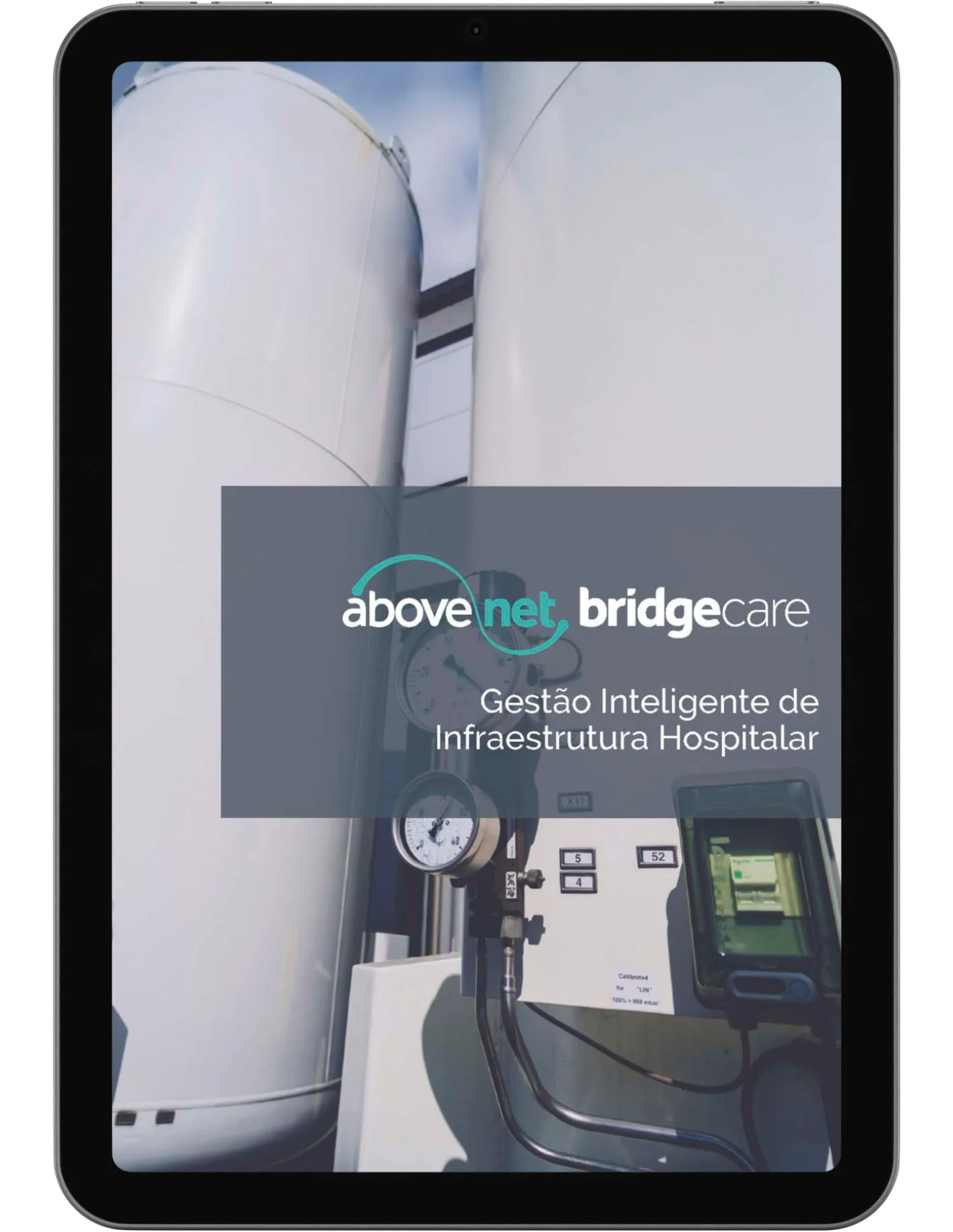In the health field, hospital infrastructure plays a crucial role, not only to ensure the efficiency of daily operations, but also to protect valuable equipment and, more importantly, to safeguard the life of patients.
A recent case study conducted by Above-Net in the medical area impactly illustrates the risks associated with the lack of proper monitoring of high-cost equipment and with a significant impact on operation, initially focused only on the basic control of temperature and moisture of the environment. This emphasizes the critical need to implement efficient solutions that may proactively act.
The challenge faced
The case in question involves a hospital that has suffered significant damage due to damage to a hemodynamic equipment, a vital area that deals with diagnosis and treatment of cardiological, neurological and endovascular conditions, using high value imaging equipment. It was identified that the cause of the defect was the excessive moisture in the room, which condensed on the equipment circuit board, resulting in a short circuit. The failure was not covered by the guarantee, since it was considered a violation of normal operating conditions, resulting in an estimated repair cost of 140 thousand reais.
The Intelligent Monitoring Solution
This direct financial loss, although substantial, does not capture the total impact of the situation. Damaged equipment was out of operation, resulting in the inability to perform vital exams, directly affecting hospital revenue and, more severely, patient care. The root of the problem? The lack of an environmental critical monitoring system, capable of controlling the temperature and moisture of the room, easily implemented with the current Internet of Things Technology (IoT).
To solve this problem, Above-Net has developed Bridgemeter, an intelligent hospital infrastructure monitoring solution. Bridgemeter is a platform that uses sensors, devices and software to track the critical variables of each infrastructure equipment, such as temperature, humidity, voltage, current, pressure, among others. It uses combined rules to perform predictive analyzes, identifying trends, standards and anomalies, and suggesting preventive or corrective actions.
Bridgemeter allows managers and technicians to have access to information in real time through computers or mobile applications, and can view control panels, graphics, historical, alarms and notifications. The platform also fires automatic notifications for maintenance team intervention before the failure becomes irreversible. Some examples of equipment that can be monitored by Bridgemeter are:
Compressors: The compressor is a highly requested equipment that operates 24 hours a day with an estimated life of 30,000 hours. It is responsible for cooling the helium gas used in image equipment. Bridgemeter monitors the voltage, current, moisture, water temperature and compressor pressure to ensure the best working condition.
Chillers: the "heart" of magnetic resonance imaging. It must maintain the temperature between 8 ° C to 10 ° C. Normally, the chiller is installed in areas of little access, which makes it difficult to follow up. With Bridgemeter, it is possible to monitor the temperature and condition of the chiller filters. To the degradation signal that impacts the operation, Bridgemeter sends alarms and tasks for maintenance scheduling.
The ROI of Prevention
The case underlines the importance and value of investing in infrastructure monitoring systems. Bridgemeter implementation is not just a preventive measure to protect valuable equipment; It is a financially solid strategy. The cost associated with monitoring is low compared to repair, revenue loss and, potentially, loss of human lives due to non -operational equipment. In addition, it is noteworthy that an intelligent and integrated monitoring system can offer a quick return on investment, safeguarding significant financial and operational losses.
Another advantage of Bridgemeter is marketing in the solution model as service (SaaS) . There is no need to purchase any equipment or system license. Just choose the sensors or equipment to be monitored and the monitoring package.
Recommended action
Hospitals and health institutions should prioritize the monitoring of their most critical and valuable equipment and environments. Identify infrastructure “jewelry” such as magnetic resonance imaging and hemodynamic areas, and protecting them with dedicated monitoring systems, it is not just a recommended practice; It is an urgent need.
The adoption of IoT technologies for continuous temperature, humidity and other critical parameters is a viable and affordable solution. These systems offer the ability to detect and alert adverse conditions before damage, allowing rapid interventions and preventing substantial losses.
Conclusion
The case study of the hospital with damaged hemodynamics equipment serves as a clear alert for the health sector. The lack of proper monitoring of hospital infrastructure not only results in direct financial losses, but also negatively affects patient care.
Bridgemeter is a robust and reliable solution that can track critical operation variables, increase safety and drastically reduce the risks of maintenance of image equipment. With Above-NetIoT solution, hospitals can optimize the use of their resources, avoid loss and loss, and ensure the quality of their health services.

Catalog
Want to know more about how to conduct intelligent management of hospital infrastructure?
Then download our catalog to explore how IoT monitoring of the hospital infrastructure improves patient care. Find out smart preventive monitoring solutions with Bridgemeter.
Also read:
IoT and Hospital Infrastructure
Intelligent operational management of hospital infrastructure


